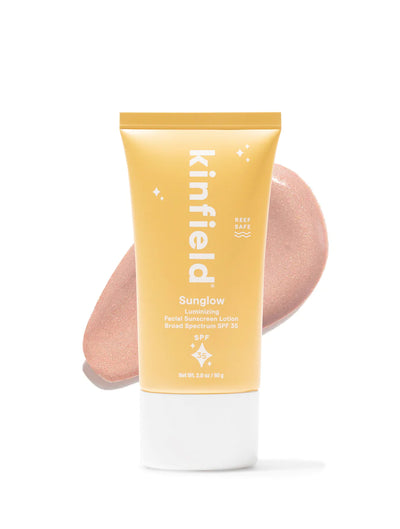Reevaluating and Understanding Hyaluronic Acid
Just because an ingredient, such as Hyaluronic Acid (HA), is deemed safe doesn't automatically make it the best option for treating your skin.
Safety doesn't equate to effectiveness or optimal skincare. Even if a product is available in the market, assuming it's not some unregulated DIY concoction, it can be considered safe. Technically, it's also safe to not wash your face at all or to cleanse with castile soap and moisturize with coconut oil. Glycolic acid is regarded safe enough to be put in daily use products and utilizing it in this capacity is also considered safe. However, are those things the best approaches to support your skin and ensure optimal skin health, preventing issues like acne and slowing down signs of aging?
Absolutely not.
What is Hyaluronic Acid?
 Now, let's take a closer look at Hyaluronic Acid (HA). Hyaluronic acid (HA) is an intrinsic component of our skin that plays a vital role in maintaining its health and structure. It acts as a fundamental building block, contributing to tissue and cellular integrity. However, as we age, the natural production of HA diminishes, leading to visible signs of aging.
Now, let's take a closer look at Hyaluronic Acid (HA). Hyaluronic acid (HA) is an intrinsic component of our skin that plays a vital role in maintaining its health and structure. It acts as a fundamental building block, contributing to tissue and cellular integrity. However, as we age, the natural production of HA diminishes, leading to visible signs of aging.
When we dig deeper into its properties, we realize that HA as a topical ingredient is, to be frank, overhyped when it comes to anti-aging and hydration. It's not the miraculous molecule that many brands and influencers make it out to be. When asked for recommendations on 'a good hyaluronic acid serum,' I find myself cringing and advocating for the numerous other significantly superior ingredients, while people passionately defend this molecule with unwarranted intensity.
When HA is topically applied, its large molecular size limits its ability to deeply penetrate the outermost layer of the skin. It can however, in this form, act as a humectant, keeping the skin hydrated and by acting as a pseudo-barrier to support the repair of damaged skin. So to combat this ”penetration issue,” the beauty industry has developed Low Molecular Weight Hyaluronic Acid (LMW-HA) to facilitate better delivery of HA into the skin.
Sounds great, right?
The Drawbacks of LMW-HA
Unfortunately, extensive evidence indicates that LMW-HA actually triggers inflammation in the skin. Here's the breakdown:
LMW-HA interacts with certain receptors on our skin cells, mimicking the response of our body to injury, which leads to inflammation. This triggers the release of pro-inflammatory substances and the arrival of the inflammation squad, including cytokines, macrophages, and defensins. Essentially, when we apply LMW-HA topically, our skin cells treat it as a native troublemaker, causing an inflammatory response.
Fetal Wound Healing and Hyaluronic Acid
 The Fetal Wound Healing Model provides key insights into this topic of inflammation. Fetal wound healing is a unique process occurring in developing fetuses, where wounds heal rapidly and with minimal scarring. This process involves a complex series of cellular and molecular events that restore tissue integrity.
The Fetal Wound Healing Model provides key insights into this topic of inflammation. Fetal wound healing is a unique process occurring in developing fetuses, where wounds heal rapidly and with minimal scarring. This process involves a complex series of cellular and molecular events that restore tissue integrity.
In fetal wound healing, there is an initial inflammatory response that swiftly subsides, followed by tissue remodeling and regeneration. This phenomenon is attributed, in part, to elevated levels of hyaluronic acid, specifically the high molecular weight variant (HMW-HA). HMW-HA creates an optimal moist environment surrounding the wound, playing a pivotal role in the complex process of tissue restoration.
However, it is crucial to differentiate between wounds and healthy skin or wrinkles. The orchestrated inflammatory response observed in the Fetal Wound Healing Model may not be directly applicable to everyday skin health. And in regards to LMW HA, the persistent presence of inflammation it causes can yield adverse consequences and actually contribute to the aging process we are actively attempting to combat.
So Why do Some Professionals and Skincare Companies Promote LMW-HA?
The sub-clinical inflammation LMW HA produces may result in short-term cosmetic benefits like plumper-looking skin. However, in the long run, inflammation accelerates aging and damages the skin.
Extensive scientific research conducted over many years and backed by experts in the field demonstrates that LMW-HA is a potent trigger of inflammation and can promote the deposition of fibrotic collagen. This type of collagen is thicker, less organized, and associated with inflammation. It's not the type we want for overall skin health and anti-aging purposes.
 As mentioned earlier, it is crucial to understand that healthy skin and aging skin are different from wounded skin. Even wounded skin will heal more effectively without the presence of inflammation and inflammatory substances. It's also important to distinguish between clinical inflammation and subclinical inflammation. Subclinical inflammation cannot be seen with the naked eye, but since aging results from accumulated micro-injuries throughout our lives, increasing subclinical inflammation can lead to long-term issues. Adding more inflammation for the sake of a temporary plump, often misrepresented as immediate hydration or collagen synthesis, is actually detrimental to our efforts in combating aging.
As mentioned earlier, it is crucial to understand that healthy skin and aging skin are different from wounded skin. Even wounded skin will heal more effectively without the presence of inflammation and inflammatory substances. It's also important to distinguish between clinical inflammation and subclinical inflammation. Subclinical inflammation cannot be seen with the naked eye, but since aging results from accumulated micro-injuries throughout our lives, increasing subclinical inflammation can lead to long-term issues. Adding more inflammation for the sake of a temporary plump, often misrepresented as immediate hydration or collagen synthesis, is actually detrimental to our efforts in combating aging.
This gradual process, disguised as beneficial, can be challenging, if not impossible, to correct in certain skin types. Skincare companies often offer instant results to satisfy consumer demands, as persuading them to wait patiently while we nourish and support the skin contradicts market expectations. Their priority is their own interests, not yours.
Determining Hyaluronic Acid Molecular Weight
So, how can we determine the molecular weight of Hyaluronic Acid (HA)? Unfortunately, it's not usually evident by simply looking at the ingredient list, unless the company chooses to be exceptionally transparent and labels it as such. The exception is hydrolyzed hyaluronic acid, which is a low weight fractionated form. Sodium Hyaluronate or Hyaluronic Acid on an ingredient list could be any weight or even a combination of weights, and you won't know unless you ask the supplier.
Benefits of Topical Hyaluronic Acid
 While not quite the unicorn ingredient it has been marketed as, High Molecular Weight HA does have its benefits in various scenarios. As a molecule naturally present in the skin, HMW HA proves valuable in micro-needling treatments. It aids in wound healing, provides hydration to the skin, and helps soothe inflammation when present in its high molecular weight form. Moreover, HA has a family of proteins called Hyaldherins that act as molecular chaperones. These chaperones facilitate the transport and binding of cytokines to cell receptors, making HA a useful carrier for biologically active substances like proteins. Essentially, it helps other ingredients penetrate the skin while keeping them effective. A couple of my favorite Hyaluronic Acid products, specifically for treatment room usage are the AnteAGE Glide and Anna Lotan's HA Hydration Gel. Both Anna Lotan and AnteAGE exclusively use high weight hyaluronic acid.
While not quite the unicorn ingredient it has been marketed as, High Molecular Weight HA does have its benefits in various scenarios. As a molecule naturally present in the skin, HMW HA proves valuable in micro-needling treatments. It aids in wound healing, provides hydration to the skin, and helps soothe inflammation when present in its high molecular weight form. Moreover, HA has a family of proteins called Hyaldherins that act as molecular chaperones. These chaperones facilitate the transport and binding of cytokines to cell receptors, making HA a useful carrier for biologically active substances like proteins. Essentially, it helps other ingredients penetrate the skin while keeping them effective. A couple of my favorite Hyaluronic Acid products, specifically for treatment room usage are the AnteAGE Glide and Anna Lotan's HA Hydration Gel. Both Anna Lotan and AnteAGE exclusively use high weight hyaluronic acid.
Restoring HA Levels in the Skin
To restore optimal levels of HA in the skin, it can be best to incorporate ingredients that stimulate the production of the skin’s native HA with anti-inflammatory, regenerative, hydrating, and high molecular weight properties. Excellent options include Vitamin A/retinoids, Vitamin C, Growth Factors/Cytokines, and Bakuchiol, which has shown the ability to enhance the expression of native HA genes.
Given these considerations, it is important to be wary of Hyaluronic Acid and the marketing hype surrounding it. While hailed as a savior by some, its true potential may not align with the lofty expectations and can even backfire in situations where we are attempting to support the skin and wind up doing the exact opposite.
About the Author:

Dru Pattan is a Licensed Esthetician who specializes in acne while taking a skin healthy approach to sustainably healthy skin known as Corneotherapy. She believes that we don't need to beat the skin into submission to make it comply. By monitoring the skin's needs and offering nourishment we are able to heal common ailments which can often seem lifelong and defeating.
Dru has been licensed since 2014 and has spent the majority of that time relentlessly hunting down advanced education within the industry. When she herself is not studying, she is offering education and support to clients and other professionals within the industry.




Leave a comment